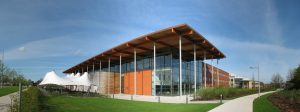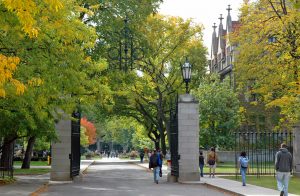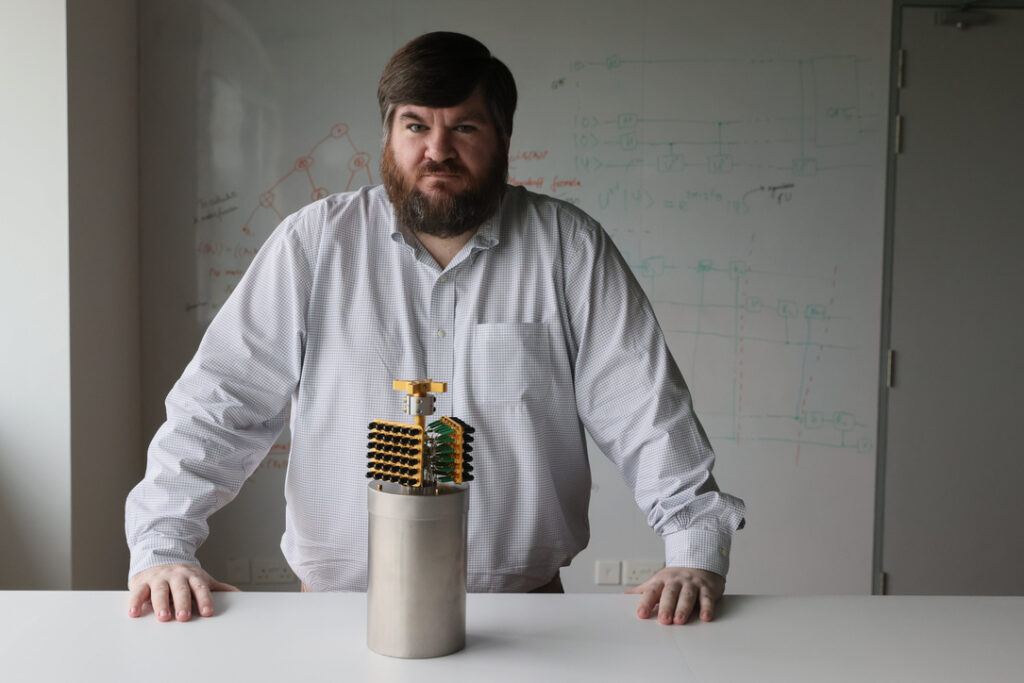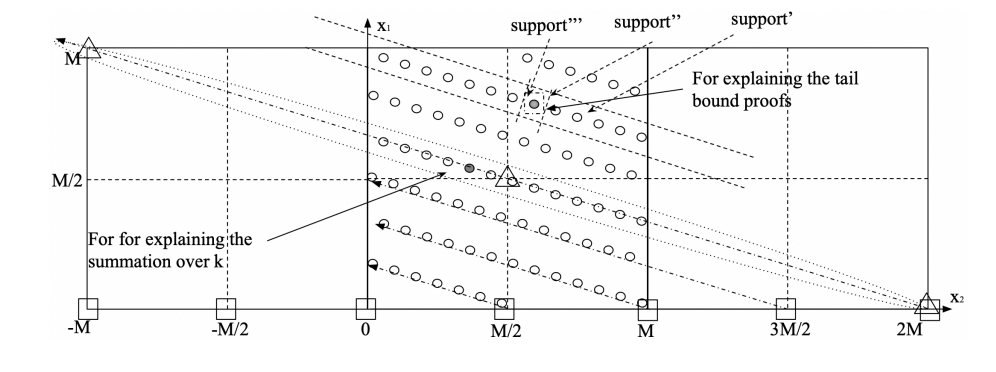
University research labs are playing a central role in the development of quantum technologies, such as quantum computers and quantum communication devices. Universities often approach quantum science from a number of angles. Some are good at theoretical approaches to quantum science. Some are strong at applied quantum science. Some focus on the educational and outreach of quantum physics.
Some combine all of these approaches to become powerhouses at quantum science, particularly quantum information science — and well worth it to keep watch on these institutions as the quantum era unfurls.
The following are multi-dimensional quantum powerhouses who are using research, teaching, or service — and, in some cases, all three — to build the quantum era. It should be noted that this list shouldn’t be seen as a snapshot of a horse race between these institutions or their countries. We used the Nature Index, which measures the largest contributors to papers published in 82 leading journals, as a rough measure of impact. We looked at count (a country/region or an institution is given an AC of 1 for each article that has at least one author from that country/region or institution) and share, which takes into account the share of authorship on each article. There are many other tangible and intangible factors to determine exact leadership that are difficult to ascertain.
Chinese Academy of Science

The Chinese Academy of Sciences is the national academy for the natural sciences of the People’s Republic of China. It was established in 1958 in Beijing. It typically ranks in the top 5 of Chinese mainland universities in prestigious ratings, such as U.S. News Report and QS World University.
The university’s quantum information sciences is stretched across several institutes, academies, centers and colleges, according to Nature. The Academy’s Shanghai Research Center for Quantum Sciences, CAS is the most focused on quantum technology. This center has 11 researchers publish from Oct. 1, 2019 to Sept. 30, 2020 and a 1.43 share in the Nature Index.
One example of quantum research in 2020 includes entanglement-based secure quantum cryptography over 1,120 kilometres.
Harvard
 Harvard University — which, like Cher, Madonna, and Bono only needs one name, i.e. Harvard — ranks high in nearly every facet of the quantum technology discovery process: teaching, research and outreach. The Nature Index identifies its overall research input as one of the top in the world. It has a total count of 2540 and a share of 933. The university’s physical science share is 195.
Harvard University — which, like Cher, Madonna, and Bono only needs one name, i.e. Harvard — ranks high in nearly every facet of the quantum technology discovery process: teaching, research and outreach. The Nature Index identifies its overall research input as one of the top in the world. It has a total count of 2540 and a share of 933. The university’s physical science share is 195.
The Harvard Quantum Initiative (HQI) is one example of the university’s commitment to not just quantum research, but applying that research to confront challenges facing society. The initiative is a community of researchers focused on the advancement of science and engineering of quantum systems and applications.
Led by co-directed by professors John Doyle, Evelyn Hu, and Mikhail Lukin, the mission is to “help scientists and engineers explore new ways to transform quantum theory into useful systems and devices.”
Max Planck Society

The Max Planck Society is not technically a university. It’s a non-profit confederation of 86 research institutions and facilities that conduct basic research in the natural sciences, life sciences and humanities. It also operates another 20 Max Planck Centers with research institutions such as the Princeton University in the USA, the Paris University Science Po in France, the University College London in UK, and the University of Tokyo in Japan.
A good example of the quantum science spearheaded by the society is the Max Planck Institute of Quantum Optics. According to the Nature Index, the institute has a count of 95 and a share of 21.56. A key study released last year was “Many-body Topological Invariants From Randomized Measurements in Synthetic Quantum Matter,” which was published in April, and Long-Distance Distribution of Atom-Photon Entanglement at Telecom Wavelength, published in January 2020.
Overall, Max Planck Society has an index count of 2730 and a share of 795.
Stanford University

As an undisputed giant in technology — Google got its start there — Stanford is a growing giant in quantum technology.
A lot of great work in quantum information science is coming from Stanford’s Institute for Theoretical Physics. Members of the institute are investigating the full length of quantum science’s deepest mysteries and include advances in quantum computing.
According to the institute: “Quantum information researchers at SITP have played an important role in the development of the basic theory of quantum communication. They continue to search for better ways to protect quantum computers from noise and communications from prying eavesdroppers. A unique feature of the quantum information group at SITP, however, is its close integration and participation in research on quantum gravity and black holes. Stanford is at the forefront of exploring the role of quantum entanglement to the geometry of space, the importance of quantum error correction in black hole evaporation, and even the relevance of computational complexity to stability of space.”
According to Stanford’s output, as registered by Nature, the university has an index count of 1693 and a share of 655. In the physical sciences alone, Nature Index shows a 225 share in the physical sciences, where you’re likely to find many quantum projects.
Helmholtz Association of German Research Centres

This is the biggest research organization in Germany. Based on its Nature Index score, it’s a leading global powerhouse in research with a count of 2442 and a share of 551 — 271 share is in the physical sciences.
According to The Helmholtz Association, its mission for quantum is “to contribute to solving important and urgent social, scientific, and economic problems.” The association is continually working to advance the development of quantum technologies. Those efforts run the complete cycle of research, from basic research to system development to application.
As an example faculty member Forschungszentrum Jülich, one of the association’s research center, part of the international team that contributed to Google’s demonstration of quantum supremacy in 2019.
University of Maryland, College Park

Several major quantum initiatives places the University of Maryland, College Park (UMCP) on the list of global quantum research powerhouses. Its Nature Index count is 672 and has a share of about 164. The physical sciences represent a major part of that share, or 91.61.
One sign of its leadership in quantum is the The Joint Center for Quantum Information and Computer Science (QuICS), which is a partnership between the University of Maryland (UMD) and the National Institute of Standards and Technology (NIST). The center advances research and education in quantum computer science and quantum information theory.
University of Science and Technology China

The Chinese equivalent of the Ivy League is called, the C9 League. The University of Science and Technology of China is a national research university in Hefei, Anhui, China, is one of the top members of the C9 League.
Its Nature Index speaks for itself. It has a 1307 count and a 474 share. About 179 of that share rests in the physical sciences.
The university’s quantum technology research is legend, particularly in quantum communication. A recent study demonstrated the ability to maintain entanglement-based secure quantum cryptography over 1,120 kilometers.
University of Cambridge

Perched at the apex of the UK’s golden triangle, the University of Cambridge is at the apex of the country’s pioneering quantum movement. Several quantum computing startups have spun out of the university, while many other quantum organizations made their homes near Cambridge because of the ready access to world-leading talent and brainpower.
The Centre for Quantum Information and Foundations is an example of the university’s ability to combine research, teaching and service to encourage the growth of this ecosystem. Based in the Department for Applied Maths and Theoretical Physics, the centre “conducts theoretical research into all aspects of quantum information processing, the implications of quantum computing and quantum information theory for physics, and broader foundational questions in quantum physics.”
In the Nature Index, the University of Cambridge has a 1395 count and a 450 share. Physical science claims a 175 of that share.
University of Waterloo

A pioneer in quantum computing, the University of Waterloo in Canada is acknowledged as a triple-crown winner in quantum science. It shines as a quantum educator, a quantum research hub, and as a good member of the ecosystem that’s committed to using outreach and startup development to make sure quantum technology reaches the public.
The university’s quantum crown jewel is The Institute for Quantum Computing (IQC). This scientific research institute proves “the quantum laws of nature in order to develop powerful new technologies and drive future economies.”
Nature Index pegs the University of Waterloo with a Count of 191 and a Share of 71, with the Physical Sciences representing about a 33 share.
A good example of University of Waterloo’s quantum research in action is its recent use of a mirror for quantum research being used to possibly identify counterfeit cash.
University of Chicago

Chicago is a hub of many industries in the United States. It’s apparent that it is growing as a quantum hub. At least one of the reasons why quantum scientists and entrepreneurs are flocking to this midwestern metropolis is its universities. One of the most prestigious research-heavy universities is the University of Chicago.
The university is a leader in the Chicago Quantum Exchange, which is fostering the growing quantum ecosystem in the midwest — and beyond.
On the Nature scale, U-of-C has a count of 722 and a share of 253, with 89 of that share in the physical sciences.
What about your picks? What are some powerhouse universities and institutes involved in quantum research that I may have missed. Let us know in the comments.






















